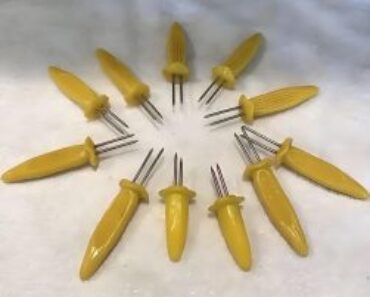In the several cases of Japanese companies’ successful transformation, the core of their success is how to use their existing technology to seek new industries and market expansions, so that they can survive.
First case: Fujifilm
Before the digital camera was born, Kodak in the United States and Fuji Film in Japan were the two largest film producers in the world. Kodak was packaged in yellow and Fuji was packaged in green. As a result, Kodak became yellow, and Fujifilm survived, and the better, the better. Why does Fujifilm survive? Because it has successfully transformed.

Fuji Film, one of the leading brands in the global film market
At the time, when Fujifilm was hovering at the crossroads, the idea of jumping off the building had been there. However, all employees think together a question: Can the company’s core film film technology be used for other purposes? Finally someone thought: how about we try cosmetics?
The concept of film and cosmetics is two thousand and ten thousand miles apart. How can they be merged? As a result, one year later, Fujifilm successfully developed the red series of cosmetics, using the company’s most traditional membrane and hydrolysis technology.
The successful development of cosmetics allowed Fujifilm to taste the sweetness of entering the health industry. As a result, the company’s focus shifted to the health industry, combining the most advanced artificial intelligence technology with Fujifilm’s traditional image processing technology to develop AI recognition technology for identifying and extracting organ regions. The medical system of informatics AI technology has become a new medical technology brand of Fujifilm, called “REiLI”.
“REiLI” technology can accurately identify the shape of the organ during imaging inspection, and find that it is different from the normal tissue structure, prompting the abnormal site to the doctor’s attention, and explaining the abnormal characteristics to point out the potential Disease conditions to help radiologists make clinical decisions by reducing image interpretation time.
The birth of this technology means that AI medical examinations will be more accurate than doctors’ physical examinations based on experience. At the same time, Fujifilm has also developed FCTPixel Shine technology, which can use AI algorithms to achieve efficient image processing at extremely low radiation doses. At present, Fujifilm is advancing the development of CAD (Computer Aided Design System) for CT detection of major organs, lung cancer, and cerebral infarction.
The most noteworthy thing is that Fuji Film has also acquired the American iPS cell refining equipment technology, becoming a patented supplier of this universal cell cultivation manufacturing equipment.
In the context of the dramatic shrinking of the photographic film market, Fujifilm is actively seeking transformation to form a “medical health”, “high-performance materials”, “electronic imaging”, “optical”, “graphics”, “document processing” Six major business areas have become a diversified technology-oriented innovation enterprise. Among them, the medical and health business has become a leader in the future development of Fujifilm, and it has also made Fujifilm an important affiliate of Japanese regenerative medicine.
Second case: Canon
Canon is Japan’s largest camera manufacturer. However, the popularity of smartphones has caused digital cameras to become a sunset market, and Canon’s proud SLR cameras have also begun to sell. According to Mr. Mitafuji Fuji, Chairman of Canon, “The company is on the edge of the cliff and will not die until it is reformed.”

A Canon product from Japan
How is Canon determined to transform? Transformed into medical equipment and surveillance cameras.
In 2013, Canon incorporated Océ in the Netherlands as a subsidiary to expand the commercial printing industry. In 2014, Canon acquired Milestone (Denmark), one of the world’s largest video management software companies; in 2015, it spent another $ 2.8 billion to acquire Axis Communications (Sweden), the world’s largest surveillance camera manufacturer; In 2016, it invested another $ 5.9 billion to acquire Toshiba Medical Devices. This series of acquisitions is based on Canon’s own world-class camera and imaging technology. In other words, based on its own traditional technology and acquisition methods, it has quickly and easily developed an enlarged version of the industry and market. In just a few years, Canon has become one of the world’s fourth largest medical device manufacturers. The PET-CT, which was introduced at the Shanghai Expo in 2018, marveled at its excellent performance.
Canon is obviously not satisfied with the medical and health industry. With its photographic technology, Canon has begun to enter the field of small satellite manufacturing and launching. Low-orbit small satellites launched in 2017, weighing 65 kg, equipped with optical imaging equipment, running orbit at a distance of 500 kilometers from the earth, orbiting the earth 15 times a day, the accuracy of ground photos taken can reach one meter, such accuracy Already high for a small satellite.
In addition to taking photos, the satellite can also calculate the size and statistics of ground objects, including vehicles, buildings or farms. It can also collect a variety of data, including debris flows, earth or other natural disasters. The manufacturing cost of this satellite is less than one billion yen (about 66 million yuan), which is only a fraction of the cost of conventional satellite manufacturing. By 2020, Canon hopes to use imaging satellites to generate $ 482 million in revenue, and by 2030, it plans to double its revenue. Not only that, Canon also started the development of rockets and the construction of satellite launch sites. Space Dream is making this traditional camera company a new member of the world space industry.
In fact, behind Canon’s successful transformation, there is a very important foundation, that is, they have a huge accumulation of their own funds, can afford to spend big money, and acquire world-class technology companies. Therefore, it is important for companies to save money!





